With their delicate melodies and artistic designs, wind chimes have a long history of adding charming vibes to homes and outdoor spaces.
The soft tinkling of chimes in the breeze can evoke a sense of serenity and connection with nature.
Choosing wind chimes for your home can be a matter of personal preference and the overall aesthetic of your living space.
Different wind chimes produce different sounds, have varying designs, and are made of various materials.
Here are some popular types of wind chimes and considerations, such as how to re-string a wind chime, ideal placements within your home, and maintenance tips to help you decide on the best choice for your space.
Types of Wind Chimes
One of the most significant factors in choosing wind chimes is the material from which they are crafted. Different materials produce distinct sounds when struck by the wind.
Metal, wood, bamboo, glass, and ceramic are common materials for wind chimes. Each creates a unique auditory experience.
1. Metal Wind Chimes
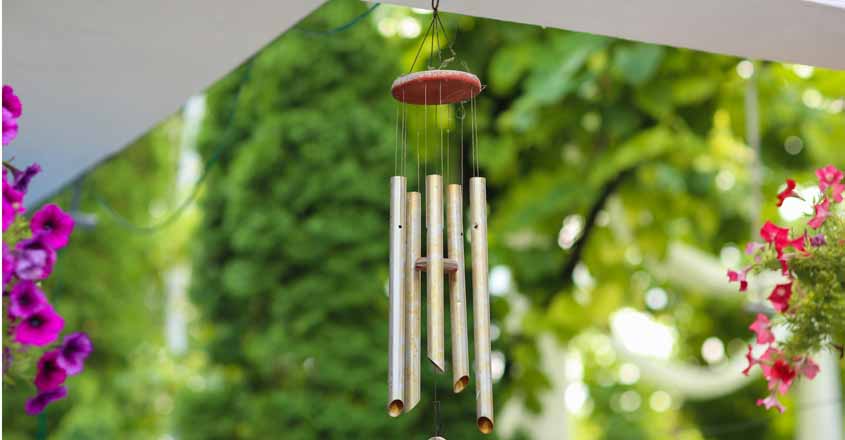
Metal wind chimes, such as those made from aluminum or brass, often produce a bright and clear sound.
The resonance of metal can result in a melodic and attention-catching melody.
These chimes work well in gardens or outdoor spaces where their sound can be carried.
2. Bamboo Wind Chimes
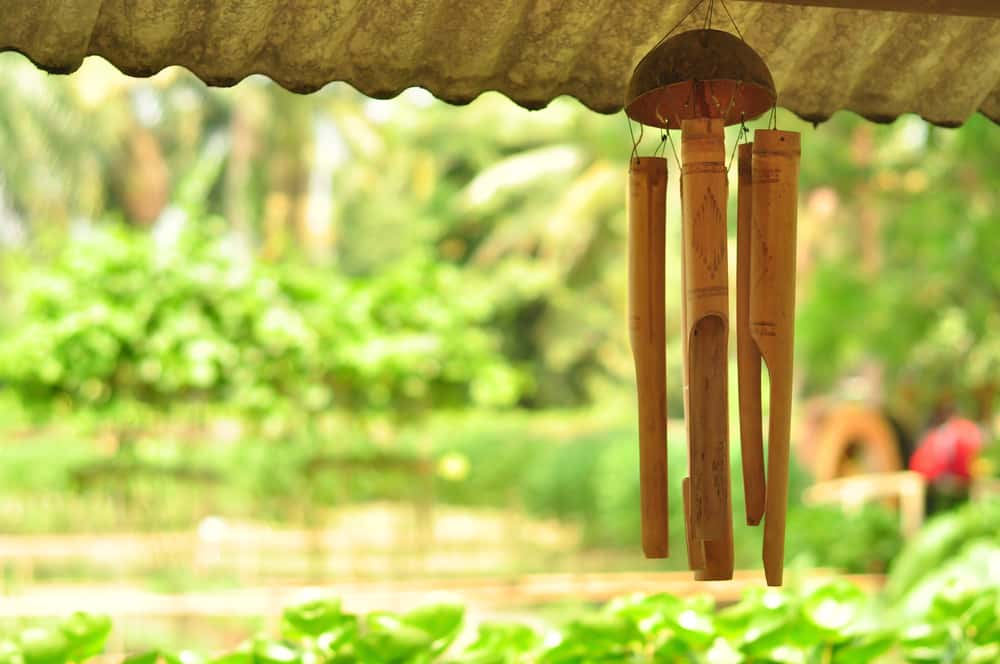
On the other hand, bamboo wind chimes create a softer, more soothing tone. Bamboo’s natural, earthy sound is gentle and calming.
Bamboo chimes are ideal for outdoor spaces, especially those with a Zen or Asian-inspired aesthetic.
3. Wooden Wind Chimes
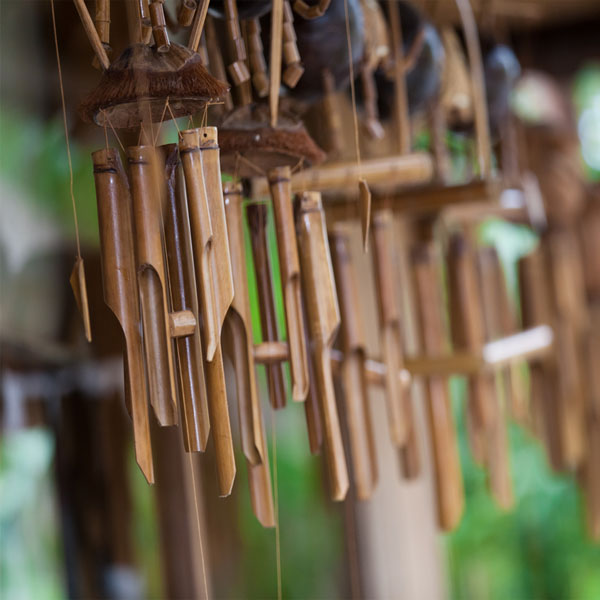
Wooden chimes, crafted from cedar or redwood, produce a warm and mellow sound.
Wood’s resonance can create a rustic and inviting atmosphere. Wooden chimes are often chosen for front porches or cozy indoor spaces.
4. Glass and Ceramic Wind Chimes

Glass and ceramic chimes offer a delicate and tinkling sound. Their melodies are often characterized by high-pitched tones that can be quite enchanting.
These chimes are excellent for adding a whimsy touch to your garden or patio.
It’s important to listen to the chime’s sound before deciding.
Many stores that sell wind chimes allow customers to hear the chimes, helping you select the sound that meets your needs and aesthetics.
Size of Wind Chimes
The size of your wind chime can significantly impact its sound and visual appearance.
Smaller wind chimes produce lighter, less resonant sounds, while larger chimes create deeper and more significant tones.
When choosing the size of your wind chime, consider the following
1. Sound Intensity
Smaller chimes are the way to go if you prefer a subtle and understated sound. They create a delicate, melodic background noise that is not overpowering.
2. Visual Impact
Larger wind chimes make a more deep visual statement. They can be striking art pieces, drawing attention and serving as a focal point in your space.
3. Space Appropriate
Think about where you intend to hang the wind chime. A large chime might dominate in smaller spaces, while a smaller one may be more fitting.
4. Tonal Range
If you’re looking for a chime with a wider tonal range, a larger chime can provide that complexity in sound.
Design and Placement
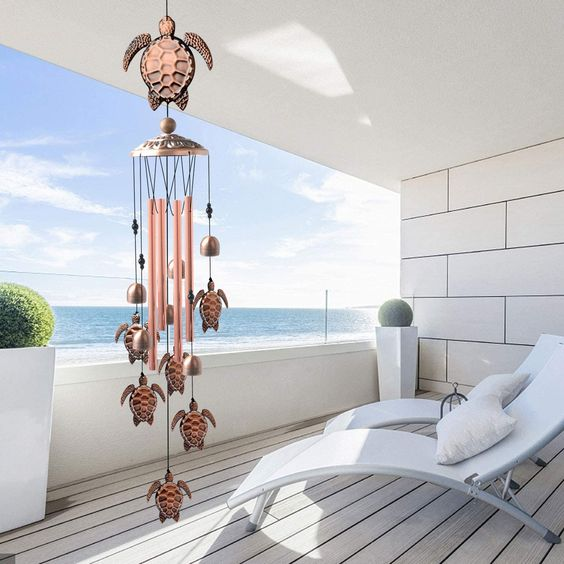
Wind chimes come in various designs, from simple and minimalist to intricate and ornate.
Your design choice should harmonize with your home’s overall aesthetics and style.
Classic metal chimes with clean lines and elegant shapes may appeal to those who prefer a more traditional look.
These chimes can complement various architectural styles and blend seamlessly into a garden or outdoor space.
Conversely, if you’re seeking to add a touch of whimsy or artistic flair, many unconventional wind chime designs are available.
Consider chimes in the shape of animals, flowers, or other objects that resonate with your interests or hobbies.
Artisans feature intricate detailing and craftsmanship to handcraft some wind chimes. These artistic pieces can be displayed as unique works while producing beautiful melodies.
The placement of wind chimes plays an important role in their effectiveness. Whether indoors or outdoors, they should be strategically hung where they can catch the wind’s gentle breezes.
For outdoor areas, consider positioning them in gardens, patios, or near water features to maximize their harmonious sounds.
Place them near open windows or doors to allow for natural airflow to create soothing melodies.
Additionally, wind chimes near the front entryway can greet guests with their calming tones.
Wherever you hang them, ensure they have enough space to sway freely and create an atmosphere of balance and tranquility.
Budget for The Wind Chime
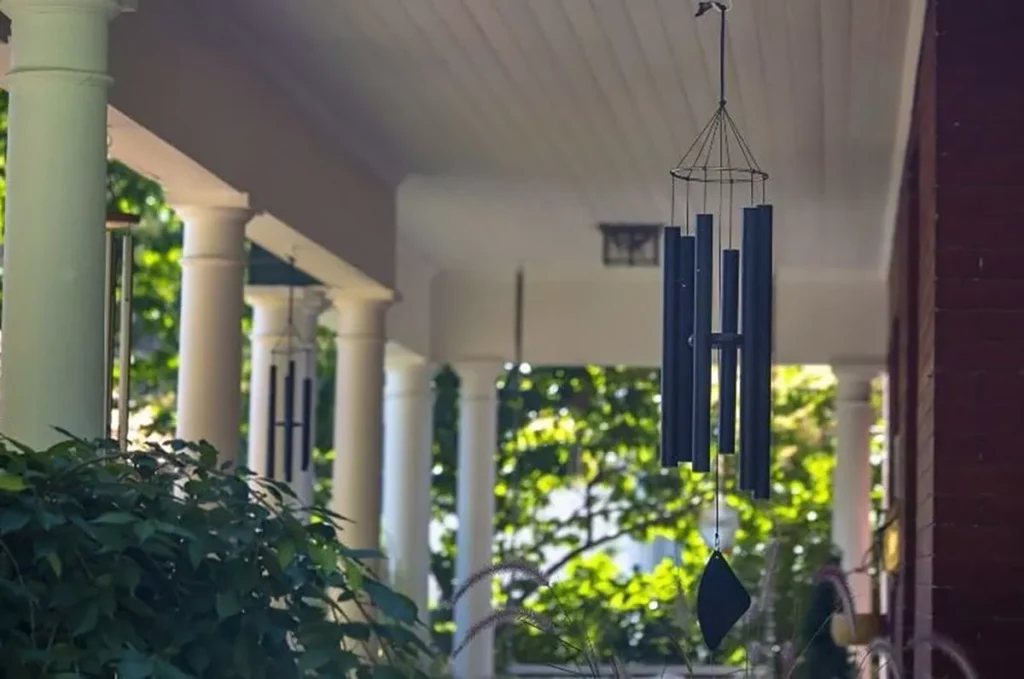
Wind chimes are available at a range of prices, from budget-friendly options to high-end artisan pieces.
Setting a budget before shopping can help narrow your choices and prevent overspending.
Remember that a wind chime’s price is often based on its craftsmanship, materials, and design.
While budget options can still provide pleasing sounds and aesthetics, more expensive chimes may offer unique features or artistic value.
Consider the long-term value of your wind chimes when making a purchase. A well-crafted wind chime can provide years of enjoyment and become a cherished part of your home’s ambiance.
Conclusion
The choice of materials, size, design, and sound of the wind chime should match your preferences and the aesthetic you are trying to create.
Whether gently chiming outdoors in a garden or indoors near an open window, wind chimes transform your environment, adding the quality of music to your surroundings.
Consider your budget, the size of your space, and the placement of your wind chimes, and then choose the wind chime that best fits your home.
When choosing one for your home, consider the long-term value of your wind chimes.
A well-crafted wind chime can last for years.

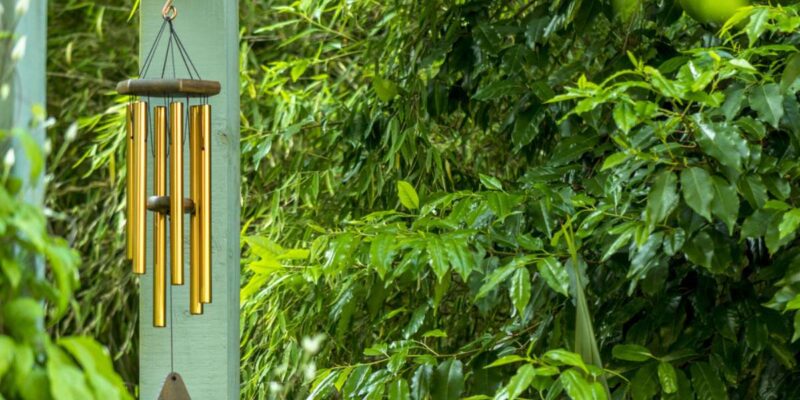





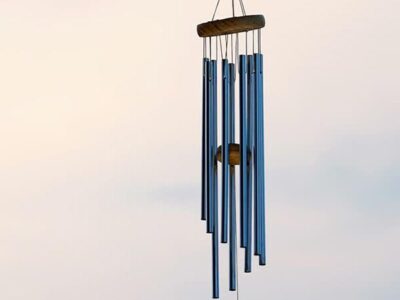






Comments